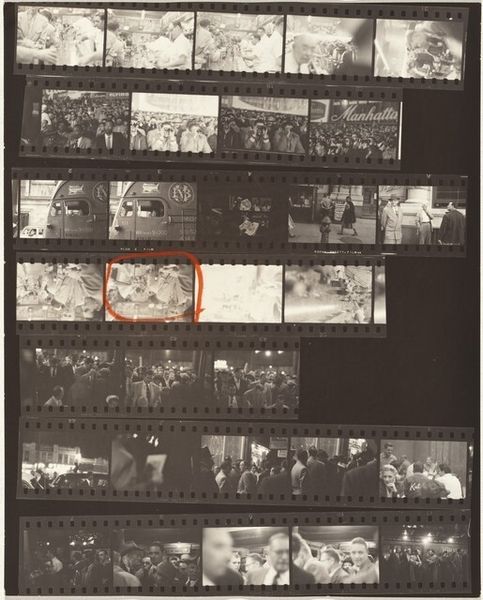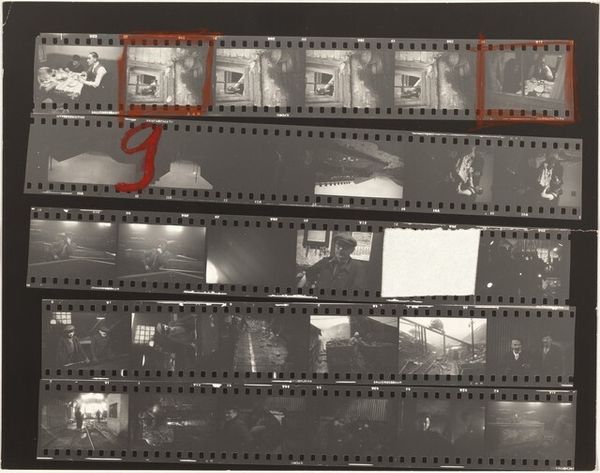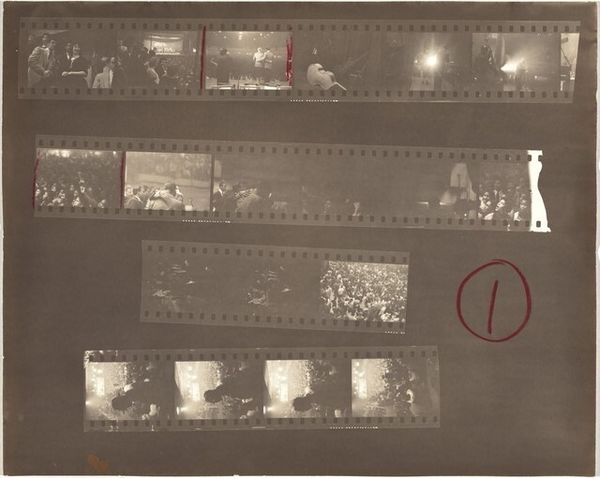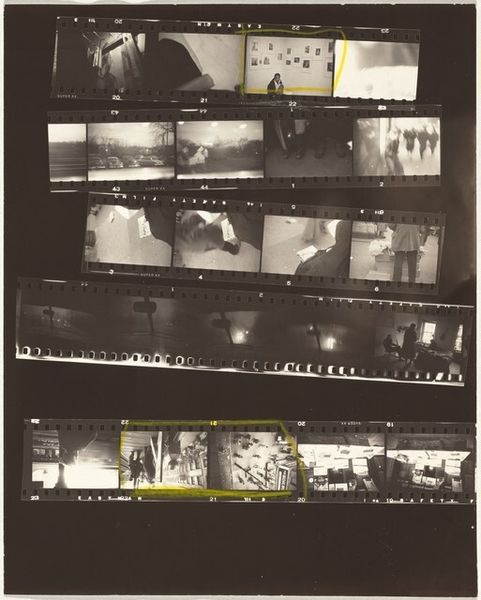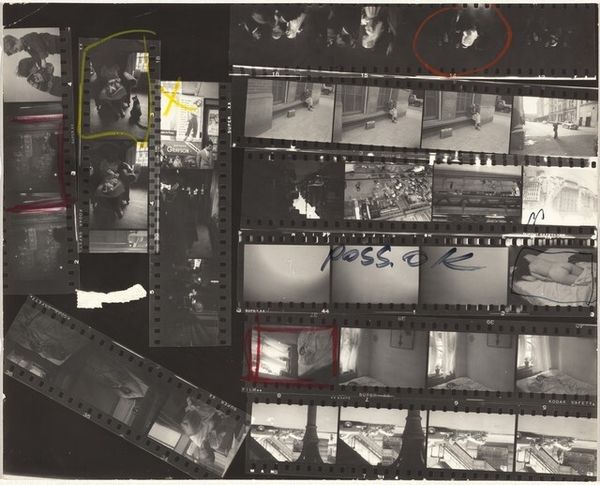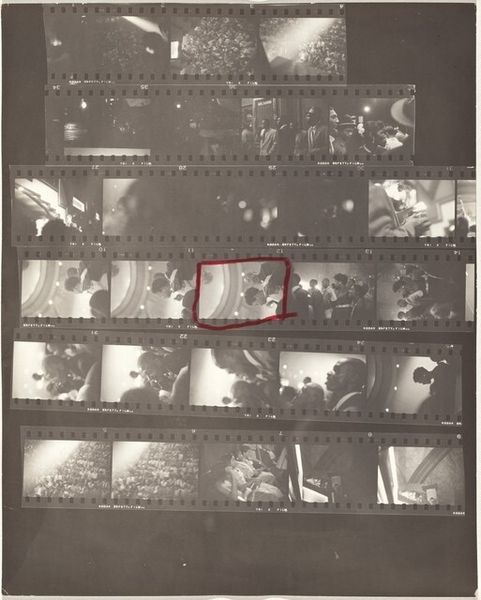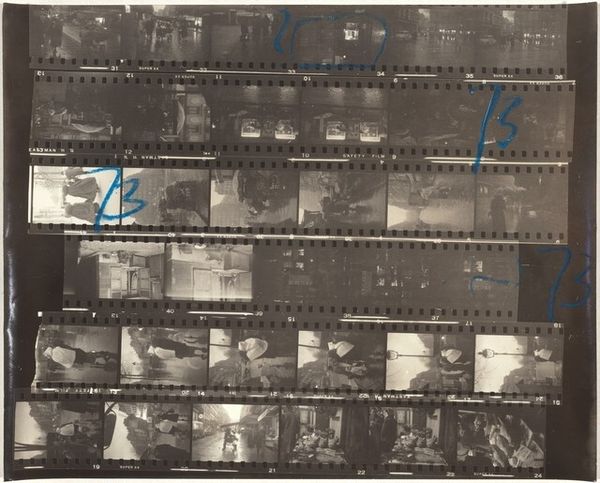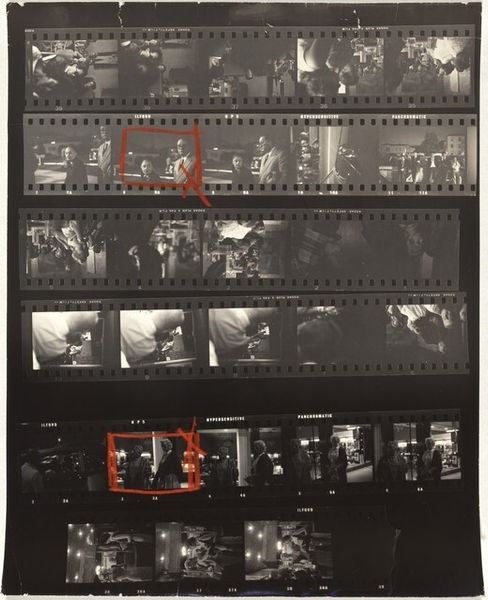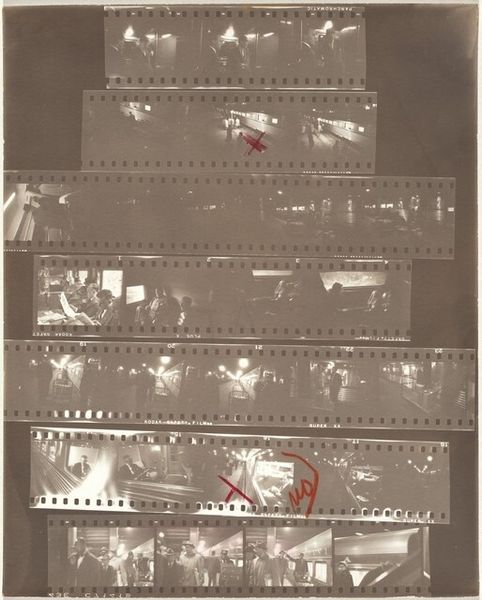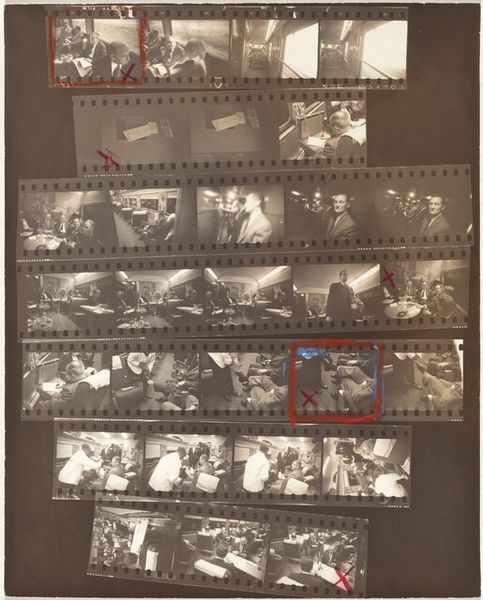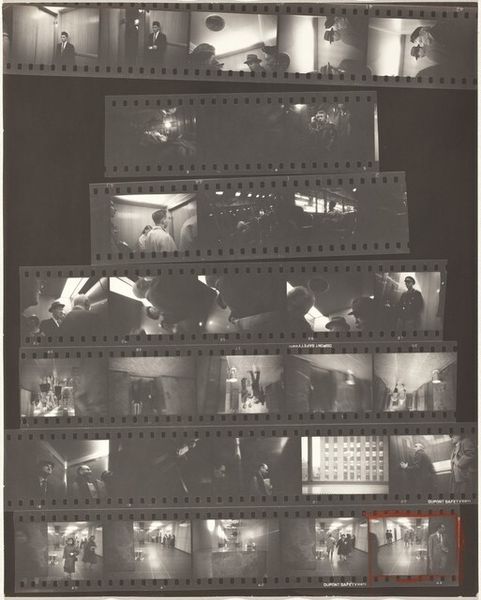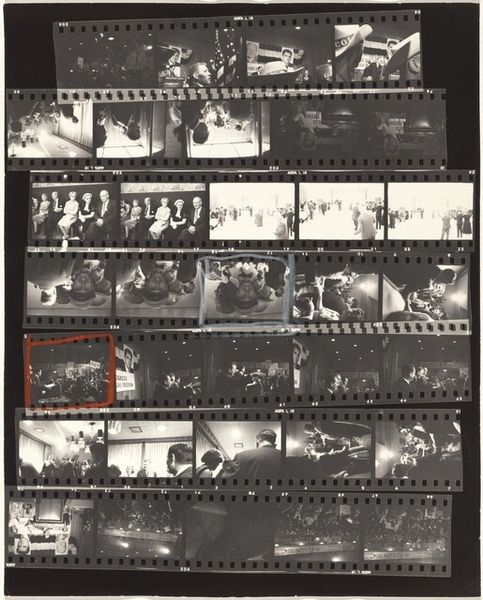
Dimensions: overall: 20.2 x 25.2 cm (7 15/16 x 9 15/16 in.)
Copyright: National Gallery of Art: CC0 1.0
Editor: Here we have Robert Frank's "Paris 41B" created between 1951 and 1952, a gelatin silver print, full of snippets from city life. It gives the feeling of a disordered archive... What social narratives do you see emerging from this contact sheet? Curator: Frank, a Swiss immigrant, offers an outsider's perspective on postwar Paris. This isn't the romanticized Paris of popular imagination; it’s a working city. Look closely – what classes of people and occupations do you observe, and what activities? The photographs are a social commentary. What power dynamics might be visible? Editor: There's a definite mix; some pictures capture what appears to be public celebrations while others show individuals in what looks like fairly ordinary settings... I guess that juxtaposition must carry a certain weight. Curator: Precisely. And consider the medium itself. Why use the contact sheet format rather than presenting individual prints? Doesn't this approach create a sense of immediacy, like raw data from lived experience? How does that speak to larger conversations about representation, authenticity, and the artist's role as observer? Editor: I didn't see it that way before but displaying it this way feels so raw, like an uncut reel from a movie or something. So I guess Frank almost intentionally disrupts that idea of 'perfect' photograph through its construction. Curator: Yes! And remember, Frank went on to create *The Americans* just a few years later, challenging dominant narratives of American identity. This contact sheet foreshadows that kind of incisive, questioning perspective. Photography became more like an investigative tool. Editor: It’s interesting how this piece almost demands a different mode of seeing, resisting the urge to just find 'the pretty picture'. It really shifts my focus to considering what the artist *wants* me to see. Curator: Absolutely! Frank asks us to critically engage with not just the *what*, but the *how* and *why* of photographic representation and how the narrative power shifts.
Comments
No comments
Be the first to comment and join the conversation on the ultimate creative platform.

